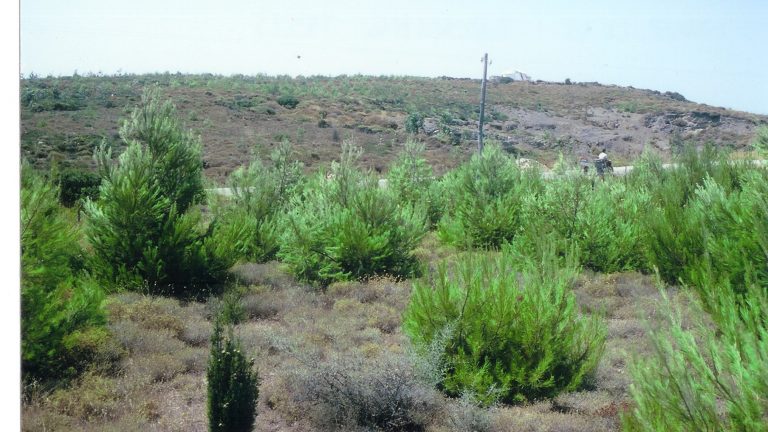The slow but lethal pine disease at Kythera
When travelling over Kythera one sees numerous pines with a cotton like “growth” on trunk and branches.
If you google “pine diseases” on Internet you find a clarifying explanation from the Parnitha forestry management dated 2006: the insect Marchalina hellenica is mainly responsible for the death of numerous pines.
Check this information yourself at Parnitha National Park in Greece
Quoting the parts from this information that are more relevant for the situation at Kythera:
The insect Marchalina hellenica is a pine parasite that produces a sweet excretion, that is collected by the bees and converted into honey, known as pine-honey. The presence of this insect has been verified only in countries around the Mediterranean and particularly in Greece. It parasites various types of pines.
The disease caused by this particular insect is called vamvakiasi, from the Greek noun ‘vamvaki’=cotton, as its excretions look like small pieces of cotton on the trees. The Ministry of Agriculture funded the beekeeping associations in Greece to deliberately infest the pines with this parasite, in order to increase honey production. This plan resulted to the dramatic increase of Marchalina hellenica populations. At the same time severe decline and significant tree mortality were observed in infested pine forests. Formally there is no specific damage known to the trees by it, however it seems that the insect lives by sucking the sap of the trees, contributing to their decay, when they are possibly infected by pathogenic fungi or other microbe.
Marchalina hellenica (Homoptera: Margarodidae) is a scale insect that lives in the eastern Mediterranean region mainly in Greece and Turkey. It lives by sucking the sap of pine trees. It can be found in the cracks and under the scales of the bark, hidden under the white cotton-like wax it secretes. All over Greece the large scale artificial infestation of pine trees with Marchalina hellenica by beekeepers between 1996 and 2000 has resulted in the loss of the ecological balance between the insect and its predators; as a result trees in the pine forest are overburdened by the insect and dying.
Fortunately this insect has a low mobility, but at Kythera they are already widely spread. The small forest at the camping in Kapsali (planted 1962), the many pines around the winery near Kalokerines, the large trees along the road from Ano Livadi to Fatsadika, the remaining 2 pines next to the church in Fatsadika, the pine forest from Potamos towards Agia Pelagia (planted 1962) and at some other places are totally infested and are dying. Several pine trees near the elementary school in Potamos have died already. The pines along the Ano Livadi village road had already been cut before the road was reconstructed. There are many more places on the island where trees are already infested. But how to stop a further spreading?
It is debated in Greece that there must be other threats that cause pine mortality, such as drought, soil and air pollution, pathogenic fungi or other microbes, urban development and or having been planted too close together.
As long as they are debating in Greece why the pines are dying nothing will be done at Kythera. At infested areas, along roads and near monumental churches and other buildings, no replanting of another type of tree is done, foreseen or even considered.
Jean Bingen, a former member of George Koksma’s Team, lives in Fatsadika yearly June through October since 2008.
